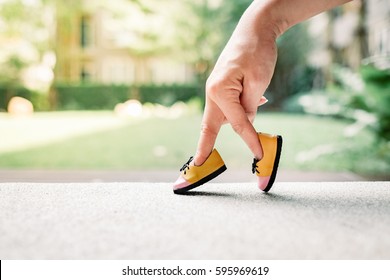
I don’t know about you, but my walking talents tend to alter daily. At first I thought it was all about shoe choice. I have to wear flats of some sort that fit snugly to my foot and not allow any “flopping”. That theory felt right, but when I realized that wearing the same shoe on consecutive days didn’t necessarily work , I had to reevaluate my ward robe and activity decisions.
One very strange thing I have noticed about walking comfortably is the texture on which I rest my feet. Until a year or so ago, the closest shopping mall had tiled or “hard” floors, making walking not as hazardous as some shopping areas. When the mall owners revamped and changed the main walking space between individual stores with a rugged indoor/outdoor type carpeting, I could no longer walk without stumbling. I now hate going to the mall more now than I ever did. By the time I travel from one end of the building to the other,I am totally wiped out, in pain, dizzy, and feeling 100% disabled. And it doesn’t help when my panic reaches desperate lengths in not knowing where the nearest rest facility is located…like…RIGHT NOW!
Foot drop has probably been my most consistent MS symptom. Even on the rare occasion I do not use a cane and actually feel confident with placing one foot in front of the other, I am on code red alert. It is not unheard of for me to just fall over with no provocation at all. My body tends to do what ever the h-e-double hockey sticks it wants.
And now…someone else’s research…
MS walking problems are unique to each patient
- Unsteadiness on walking or turning
- Slower, shorter steps
- Less confidence
- Needing support from walls, furniture or other people
- Tripping and stumbling
- A heavy feeling in the legs when stepping forward
- Weakness of the leg when weight is on it
- Difficulty placing the foot on the ground
upporting Links
What can I do to improve my walking?
- Orthotics or splints can support weaker parts of your legs
- Some drugs may reduce fatigue, spasticity and pain
- Physiotherapy may help to improve your posture and gait
- Walking aids like canes or walkers can give confidence when out and about
- Use mental visualisation techniques to practice walking in your head and train your brain
- Computer games or virtual reality may help train the brain and improve balance
- Music and rhythmic cues can help with walking speed and gait regularity
- Gentle exercise such as yoga can improve core strength, leg strength and reduce fatigue
- Try to remove trip hazards like trailing wires and rucked up carpets in your environment
This happened to me: Walking Aids
Steve writes: Like most MSers, I really don’t need anything else to make me feel unsteady on my feet. For this reason, I’m not a massive fan of snow and ice! I highly recommend Yaktrax for snowy conditions. They are basically snow chains for your feet, and strap on over your footwear.Like a walking stick, they’re something simple that can make you feel independent in all weathers if you have any mobility or steadiness concerns.
- The effect of rhythmic cued motor imagery on walking, fatigue and quality of life in people with multiple sclerosisMultiple Sclerosis Journal 2017 23(2) 286-296Summary
- Exercise as a therapy for improving walking ability in adults with multiple sclerosis: A metanalysisArch. Phys.Med Rehabilitation 2015 96 (7) 1339-1348Summary
- The effect of balance training on postural control in people with multiple sclerosis using the CAREN virtual reality system: a pilot randomized controlled trial.Journal of Neuroengineering and Rehabilitation 2016 13 (3) 13Full article
Find out more
- Changes to walking and balance – article in Open Door February 2013 issue (PDF 1.7Mb)
- Falls
- Symptoms of MS
- Warm up with Mr Motivator
- Staying active with MS
- MS research update – Can personalised physical rehabilitation improve walking in people with MS? – 24 March 2015
And, now, words from my favorite go-to read on multiples sclerosis…
WHAT CAUSES WALKING PROBLEMS WITH MULTIPLE SCLEROSIS?
Have a great week.
Tip toeing through the tulips,
Lisa
